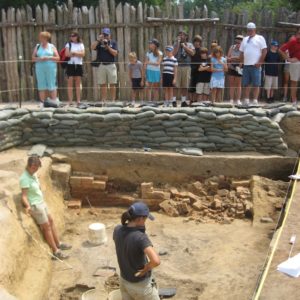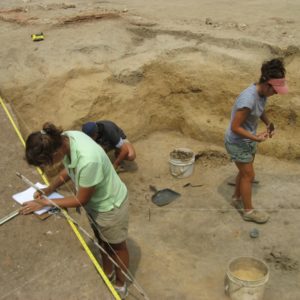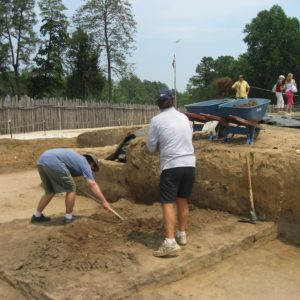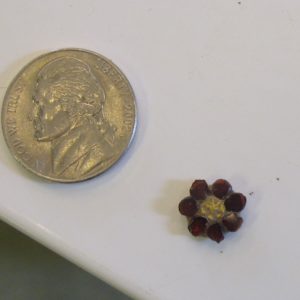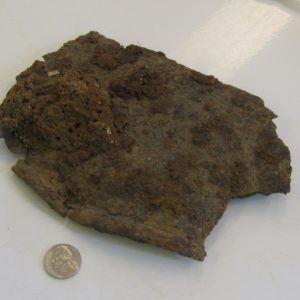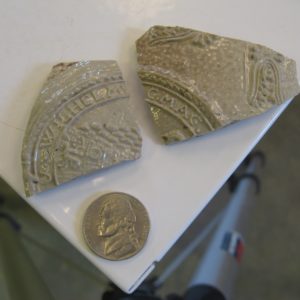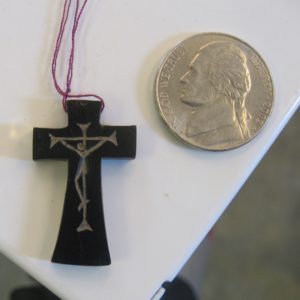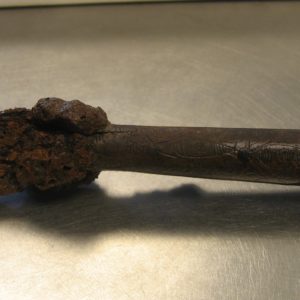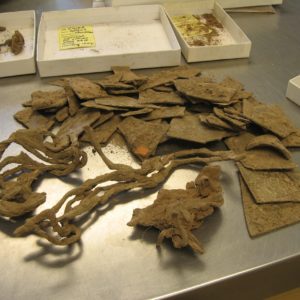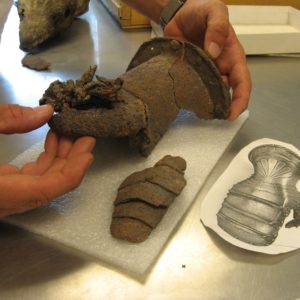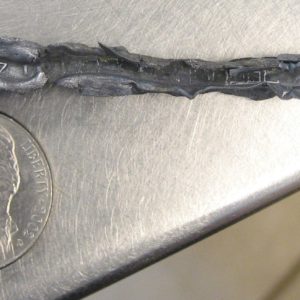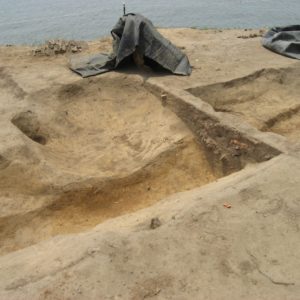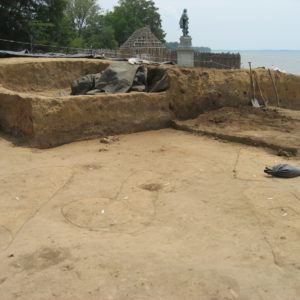After giving up its treasure of arms and armor in May, the cellar of a building just inside the eastern palisade wall of James Fort is beginning to take shape. The cellar’s brick-lined eastern wall was the first to be excavated, and archaeologists are now searching for the other walls of what appears to be a rather interesting and sizable feature. On the other side of the fort, excavations close to the southwest bulwark have yielded a wealth of interesting artifacts that were contained in and around two late-17th-century boundary ditches. Human burials continue to be discovered, as well as a number of fort-period postholes, the nature of which is still not clear.
Archaeologists are busily troweling away inside the cellar of a structure that parallels James Fort’s eastern palisade wall. The wall of the cellar closest to the palisade is lined with brick. The northernmost end of the brick wall has been found. At the other end there appears to be an earthen dividing wall where the brick ends, and then a continuation of the cellar on the other side of the earthen wall, though without a brick lining. At about the halfway point along the brick-lined section there appears to be the remains of a brick pillar used to support the structure above. The section of the cellar to the south of the earthen dividing wall has only begun to be excavated. This cellar held a number of weapons—including a nearly-intact broadsword—and several pieces of armor that were discovered in May. This month, a bone-handled eating knife was found in the cellar. It contains amber inlay and an intricate design has been etched into its handle. The blade is broken, but what remains is largely rusted and will need to be conserved before some semblance of its original shape can be seen.
Another team of archaeologists continues to search near a series of human burials for signs of the fort’s first church. Near the southwest corner of the fort, in an area where over twenty burials were discovered in 2005, further digging toward the north and east has led to the discovery of four additional single burial shafts and one double burial shaft. A large number of fort-period postholes have also turned up that probably belong to more than one building. The archaeologists have yet to piece together this confusing array of postholes, but the hope is that further clearing of unexcavated sections of earth down to the fort-period layer will reveal more of the post holes and give the Jamestown Rediscovery team a more complete picture of this part of the fort.
The excavation of the area in and around a late-17th-century ditch discovered last month has led to the excavation of a wealth of artifacts. The ditch has in fact turned out to be two ditches, one that follows a fairly straight path and is older in age, and another that has a zigzag shape and cuts through the straighter path in places. The artifacts contained in these ditches have dated both ditches to near the end of Jamestown’s tenure as Virginia capital. A complete jet crucifix, very similar in style to two others found earlier in the dig was found here. Two sherds from the medallion of a Westerwald salt-glazed drinking vessel were found in the ditch. The medallion bears the name “Wilhemvs” which references King William III of England. Part of the likeness of the king is visible on the sherds. This particular design dates to the period of William’s reign after the death of his wife, Mary II (1694-1702). This precisely-datable object, along with the discoveries of two other objects, a wine bottle and a pipe bowl—both reliably datable within a few decades based on their shape—date the ditches to around the turn of the 17th century. A pit cutting through the ditches contained a large amount of window glass and the window lead that held the glass pieces in place. Window lead was often inscribed with the name or initials of its maker as well as its creation date, and one of the pieces that has been conserved is inscribed WW 1671. A gold leaf brooch surrounded by seven garnets was also found while excavating the ditches.
Conservators have come close to completing work on a gauntlet found in a well in 2006. A gauntlet is a piece of armor designed to protect the wearer’s hands during combat. Work continues on the jack of plate armor mentioned in June’s update, and on the breastplate excavated from the cellar in May.
related images
- The cellar’s earthen dividing wall can be seen to the right of the collapsed section of the brick wall
- Archaeologists Jamie May and William Kelso at the cellar
- Archaeologists working in the cellar
- Archaeologists removing 10′ x 10′ squares down to the fort-period layer
- Gold leaf and garnet brooch
- Part of a tasset found in the cellar
- Sherds of a salt-glazed Westerwald drinking vessel
- Jet crucifix found in the ditch
- This knife was found in the cellar
- Pieces of window glass and window lead
- Conserved gauntlet
- Window lead after conservation. ‘WW 1671’ is visible near the left edge.
- The two late-17th-century ditches
- Posthole and burial shaft stains



